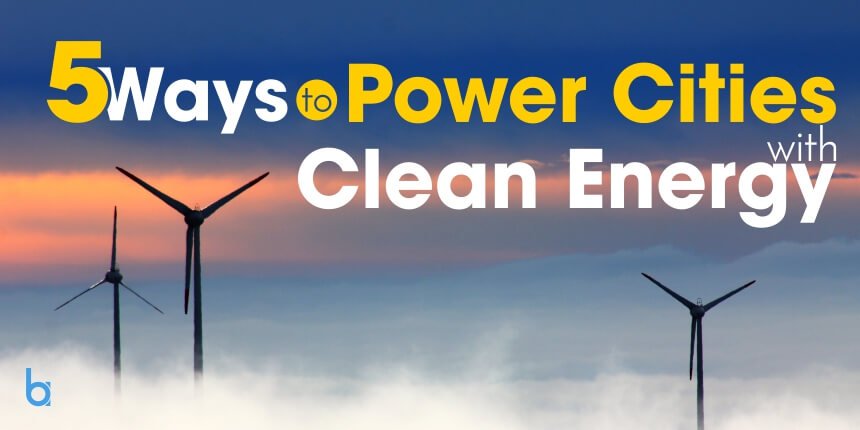Intensifications of carbon dioxide and greenhouse gases not only affected human lives but also caused climate changes. Human-induced climate change has increased the number and severity of events like hurricane, tornadoes, wildfires, and cyclones. Further, there are health damages because of NOx, SO2, and mercury emissions. Electricity generation is one of the leading causes of industrial air pollution and most of the electricity is generated from coal, nuclear, and various other non-renewable power plants letting air, land, and water pollution.
The use of renewable energy is trending for a few years but there are few barriers to renewable energy technology such as political and regulatory barriers, financial barriers, geographic barriers, and more. The most concerned obstruction to renewable energy is capital cost. The cost of infrastructural development to set-up renewable energy makes it expensive from coal and natural gas. But with the time passing peoples are realizing the significance of renewable energy. For instance, countries of the European Union have set the target of getting 20 percent of its power from renewable sources in 2020 and most of the countries have already met the goal.
Cities Transitioning into Clean Energy
Surely cities are the most important factor for promoting clean energy but reports state that cities are responsible for 70 percent of the world’s CO2 emission related to energy. However, the scenario is changing and more cities are taking part in the clean energy program.
The inception of the Paris Agreement has a motto to keep the increasing global average temperature well below 2 °C above pre-industrial levels; and to limit the increase to 1.5 °C, as this would noticeably reduce the risks and effects of climate change. This is an agreement within the United Nations Framework Convention on Climate Change (UNFCCC) and it concerns the greenhouse gas emission, climate change mitigation, and climate change adaption. Till now, 195 UNFCCC members have signed the agreement, and 185 have become a party to it.
The UK100, a network of local government leaders of the UK, has announced that over 80 towns and cities have committed shifting to 100 percent clean energy by 2050. This shows that the native leaders are working together to establish nationwide projects of renewables and fulfill the needs of natives.
The city of Chicago, the third most populated city of the United States has committed to power all municipal buildings with 100% renewable energy by 2025. In this project, more than 900 buildings including Chicago Public Schools, Chicago Park District, Chicago Housing Authority and city colleges are planned to be operated by renewable sources.
These mentioned cases are just a few of the long list of cities committed to transforming into clean cities. Most cities around the world are creating power with various renewable sources like solar energy, wind energy, biogas, etc. Moreover, the public is much aware now and knows the importance of renewables considering the future.
Ways of Converting Cities into Clean Energy
There are numerous ways of transforming cities into clean energy. Some of the most influential and significant ways are stated here.
1) Authorizing New Clean Energy Opportunities
The important factor to drive cities towards transforming into clean energy is legislating new clean energy options. The City of Philadelphia has already released a municipal energy master plan. It has helped in setting the roadmap to drastically reduce the carbon emission of the city and shift municipal energy use to 100 percent renewables by 2030. To meet the further goal the city staff began exploring the potential for a power purchase agreement (PPA). This contract allows a city to electricity directly from a solar developer rather than from a utility.
Some cities have established a fund to invest in energy efficiency, renewable energy, and carbon reduction projects. The cities of Basel and Switzerland are also using its legislative power so that the newly built buildings and facilities produce 50% of their warm water with renewable energy.
Multiple cities have pledged to become clean cities. The legislators of the District of Columbia have voted to advance a bill that would set a 100% renewable energy mandate by 2032. Illinois’ Clean Energy Jobs Act is also an exceptional bill as it stands out as a nation-leading proposal and is based on Illinois communities’ priorities. The bill promises to offer jobs with economic opportunities, 100% renewable energy by 2050, a carbon-free power sector by 2030, and many more. Last year, the state of Texas led the country in installing 7,352 megawatts of new wind, solar, and energy projects. This gives consumers the option to choose from different energy suppliers using renewable energy through the help of comparison sites like choose power texas.
There are several other laws and bills passed in various countries like South Africa, Myanmar, India, Japan, Australia, New Zealand, Sweden, etc.
2) Instituting Standard Power Purchase Agreements (PPAs)
The uncertainty in the market stands in the way of substantial investments in renewable energy-based electricity generation. In South Asia, the market vagueness was overcome by establishing standard PPA which is a standard offer from the national utility to purchase all energy from a particular renewable energy-based independent power producer (IPP) at a foretold price. PPA also includes the program for electricity delivery, forfeits for under delivery, payment terms and much more. Further, it outlines the profits and credit quality of a generating project and is thus a vital instrument of project finance.
Boston City is also bringing this approach to renewable energy procurement so that the project developers know the demand for clean energy. Further, 20 American cities were arranged to explore combined buying power for large-scale renewable energy purchases through a virtual power purchase agreement (vPPA).
The fact that the electricity generation license is generally issued for a period varying between 7 to 15 years provides very limited time for the investors to recover their costs and make some profit. Offering longer-term licenses and PPAs for a period of 15 to 30 years to an independent power producer can make sure that the feed-in price of electricity charged by the investor of sustainable energy is moderate making them more interested to invest in the program.
3) Offering Subsidies to Renewable Energy-based Power Systems
It is observed that the connecting of decentralized renewable energy power plants to rural electrification can develop local benefits and increase the sustainability of these plants. Then to get a reasonable return on investments, the capital cost of rural electrification can be covered in the form of subsidies granted by the government which could be obtained from rural electrification funds or from donors. Governments in the province of Uganda, Kenya, and Tanzania have provided grants for private companies that improve rural electrification services.
4) Affiliating with Utilities
The collaboration of cities and their utility to access renewable energy solutions is very crucial and it has the potential to include the green tariff program that allows the city to purchase large-scale renewable energy through its utility. For instance, Kansas City Power & Light (KCP&L), the electric utility of Kansas has allied with the city to help achieve its goal of clean energy. The green tariff filed by KCP&L allows the utility to acquire wind energy for city operations.
Salt Lake City has also contracted a clean energy co-operation program with Rocky Mountain Power (RMP) with the goal of having 100 percent community renewable electricity supply by the end of 2032. The association also make the city to subscribe to portions of large solar projects to improve their renewable consumption.
5) Constructive Tariff Designs
The feed-in tariff (FIT) is basically a program designed to accelerate investments in renewable energy technologies offering long-term contracts to renewable energy producers. FIT offers renewable energy producers with a fixed price for a fixed period of time. This ultimately increases the stability and enables the city official for long-term planning along with an increase in investments in renewable energy projects.
Conclusion
The use of renewable energy sources can provide energy without the emission of carbon dioxide and also reduces harmful smoke and water pollution. It also shrinks the impacts caused by coal mining and gas extraction. Apart from listed above, there are many ways to bring renewable energy in day-to-day life. Though it is not possible to immediately replace the current fossil-fuel infrastructure, there is a strong and continuous awareness amongst the peoples. Governments are also taking serious actions to build renewable energy generations.
















